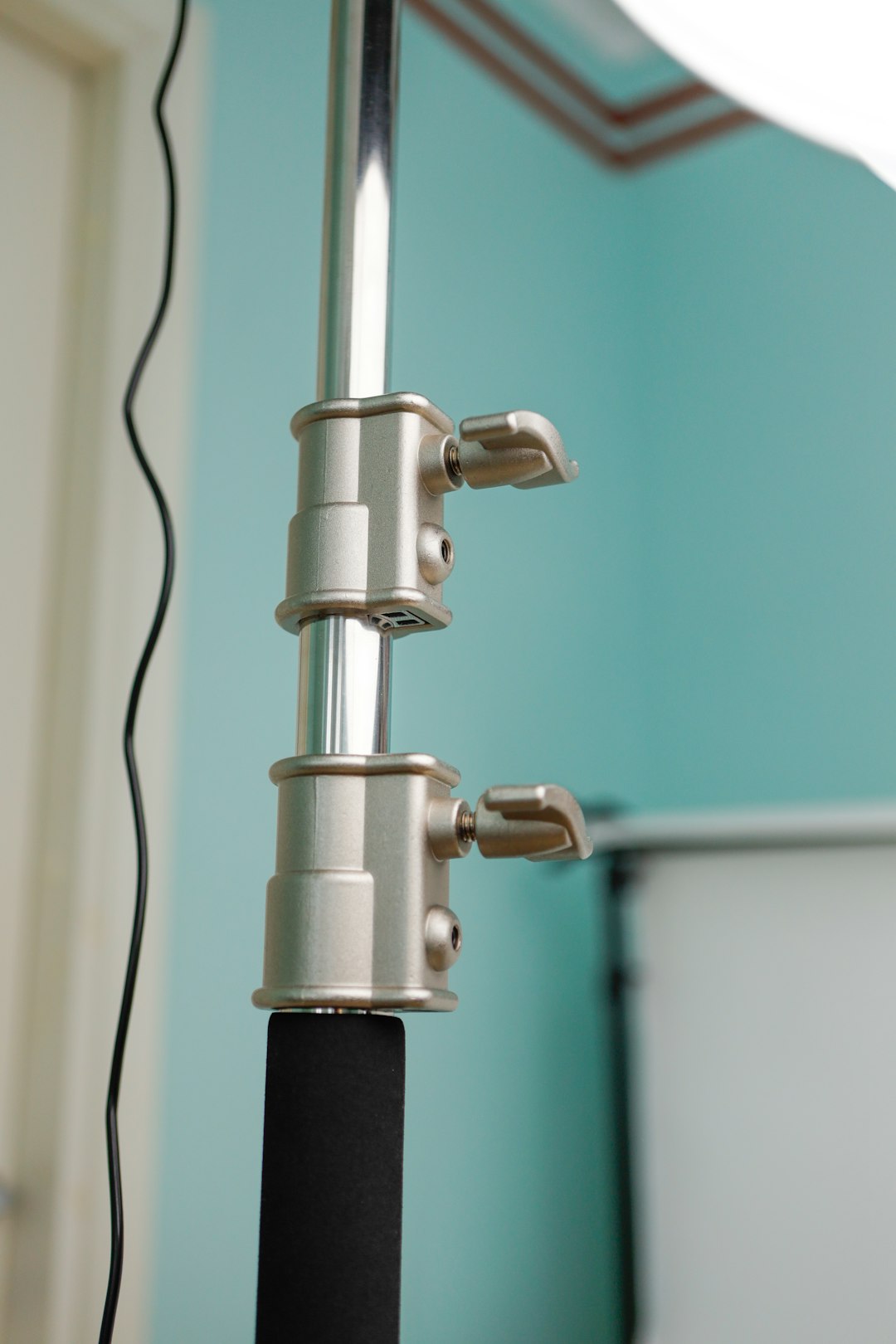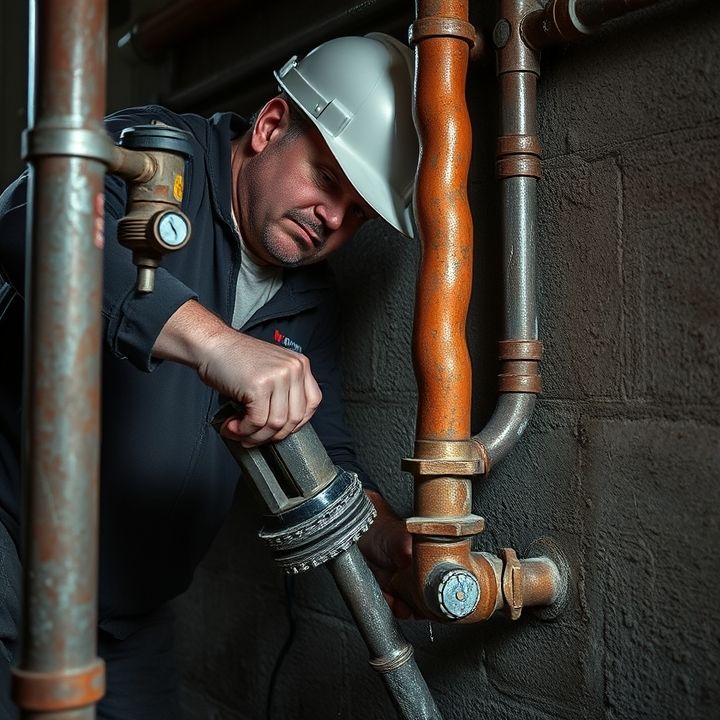Table of Contents
- Introduction
- Identifying the signs of a slab leak
- Utilizing plumbing leak detection methods
- Accessing the plumbing system under the slab
- Choosing the best repair method for slab leaks
- Performing plumbing pipe replacement
- Conducting plumbing water heater service if necessary
- Ensuring plumbing code compliance during repairs
- Providing plumbing maintenance and follow-up services
- Conclusion
- Frequently Asked Questions
Introduction
In the realm of home maintenance, few challenges can match the perplexity and urgency of a slab leak. Hidden beneath your feet, these sneaky intruders can wreak havoc before you even know they’re there. Imagine the sound of dripping water echoing in silence—it’s a worry that no homeowner wants to face. Fortunately, the skilled hands of a plumber equipped with both tools and expertise can turn a potentially disastrous situation into a manageable fix.
This article dives deep into the meticulous process of how plumbers tackle these elusive leaks. From pinpointing the source of the problem to implementing effective repair strategies, understanding the art of slab leak repair will empower you with knowledge. Plus, we’ll shed light on the modern techniques and technologies that make this process not just effective, but efficient.
Ready to uncover the secrets behind the craftsmanship of these plumbing professionals? Join us as we explore how the masters of repair transform chaos into calm, ensuring your home stays safe and dry.
Identifying the signs of a slab leak
Identifying the signs of a slab leak is crucial for addressing potential plumbing issues before they escalate. One of the most common indicators is an unexplained increase in your water bill, which may suggest the presence of a leak beneath the foundation. Homeowners should also watch for damp or wet spots on the floor, particularly those that appear without any obvious source of moisture. Additionally, the sound of running water when no faucets are in use can signal a leak.
Another sign includes the development of cracks in the flooring or walls, which may arise as the foundation shifts due to excess water. Uneven floors or a sudden drop in water pressure can also indicate a slab leak.
Lastly, if you notice mold or mildew in areas with no direct water exposure, this could be a consequence of hidden leaks. Being vigilant about these signs can help homeowners act quickly and minimize damage to their property.
Utilizing plumbing leak detection methods
Utilizing plumbing leak detection methods is essential for identifying and addressing slab leaks effectively. Plumbers often begin with visual inspections, checking for signs of water pooling, damp spots, or unusual increases in water bills. If initial observations raise concerns, they may use specialized equipment, such as acoustic leak detectors. These devices can pinpoint the sound of leaking water, allowing plumbers to locate the source without extensive excavation.
Infrared thermography is another sophisticated method employed in leak detection. This technology detects temperature variations on surfaces, helping to identify areas where water might be escaping. Additionally, video camera inspections using rigid or flexible cameras can provide visual confirmation of the leak’s location within the plumbing system.
Pressure testing is also a common approach; in this method, the plumbing system is temporarily sealed, and pressure monitors are used to identify drops in pressure that may indicate a leak. By effectively utilizing these detection methods, plumbers can ensure accurate diagnosis and targeted repairs, minimizing the disruption caused by slab leaks.
Accessing the plumbing system under the slab
Accessing the plumbing system under a slab is a crucial step in diagnosing and repairing slab leaks. The repair process often begins with identifying the location of the leak, which may require the use of specialized equipment such as acoustic listening devices or infrared cameras. Once the leak is pinpointed, plumbers usually excavate the concrete slab to gain access to the pipes.
This excavation typically involves cutting a section of the slab with a concrete saw, allowing the plumber to carefully remove the concrete and expose the plumbing lines. It is important for plumbers to approach this task with precision, as excessive damage to the surrounding area can lead to more costly repairs.
In some cases, plumbing systems may be accessible through existing entry points, such as access panels or floor drains. However, if those are unavailable, the excavation method is commonly employed. After access is obtained, plumbers can assess the extent of the damage, conduct repairs or replacements, and ensure that the system is functioning correctly before sealing the slab back up.
Choosing the best repair method for slab leaks
When faced with a slab leak, choosing the best repair method is crucial for effective resolution. The two primary techniques for repairing slab leaks are traditional slab removal and trenchless methods.
Traditional slab removal involves breaking through the concrete to access the pipes directly. This method is often more invasive, requiring significant labor and repair to the flooring afterward. However, it allows for easy access to the source of the leak, making it suitable for severe cases.
On the other hand, trenchless repair techniques, such as epoxy pipe lining or pipe bursting, have gained popularity due to their less invasive nature. These methods enable plumbers to repair leaks without extensive excavation, which can save time and reduce costs. Epoxy lining involves coating the interior of the damaged pipes with a resin, while pipe bursting replaces old pipes by bursting them apart and installing new ones in their place.
Ultimately, the best method depends on factors such as the leak’s location, severity, plumbing system type, and budget considerations.
Performing plumbing pipe replacement
Performing plumbing pipe replacement is a critical process when addressing issues such as slab leaks. It involves several steps to ensure that the replacement is successful and does not lead to additional problems. First, a plumber will need to locate the source of the leak. This often involves using specialized equipment to detect moisture or changes in temperature under the foundation. Once the leak is identified, the plumber will gain access to the damaged pipe. In cases of slab leaks, this may require cutting through the concrete slab.
After accessing the pipe, the next step is to remove the damaged section. This involves carefully cutting the old pipe and preparing the ends for the new material. The plumber will then select suitable replacement pipes, which may include options like PEX or copper, depending on local codes and preferences.
Finally, the new pipes are installed using fittings and connectors to ensure a secure and leak-free system. Once installation is complete, the plumber will perform pressure tests to confirm that the repair is effective before sealing the slab and completing any necessary restoration work.
Conducting plumbing water heater service if necessary
Conducting plumbing water heater service is a crucial aspect of maintaining an efficient water heating system. Regular servicing helps in identifying potential issues before they become serious problems, ensuring that your water heater operates smoothly and reliably. During a service, a plumber typically inspects various components of the water heater, including the heating element, thermostat, and pressure relief valve.
One common task performed during service is flushing the tank to remove sediment buildup, which can affect efficiency and water quality. Additionally, plumbers check for leaks and corrosion, addressing any signs of wear that could lead to more significant issues.
It is also essential to test the temperature setting to ensure it is not too high, as this can pose safety risks. After the service, the plumber may provide recommendations for ongoing maintenance and troubleshooting tips for homeowners. Overall, scheduling regular water heater service can lead to improved performance, extended lifespan, and better energy efficiency.
Ensuring plumbing code compliance during repairs
Ensuring plumbing code compliance during repairs is crucial to maintaining the integrity and safety of a plumbing system. Local plumbing codes are established to protect public health and safety, ensuring that water systems deliver clean water and that wastewater is properly disposed of. When repairing a slab leak, plumbers must first familiarize themselves with these codes as they vary by region.
During the repair process, it is essential to use approved materials and methods. For instance, if replacing pipes, they must meet specific standards regarding size, pressure rating, and corrosion resistance. The plumbing code also dictates how pipes should be installed concerning joints, fittings, and support systems.
In many cases, permits are required before commencing significant repairs. This not only guarantees compliance but also provides an avenue for inspection by local authorities. Failure to adhere to plumbing codes can lead to costly fines and potential hazards. Therefore, working with a licensed plumber who understands local regulations is key to ensuring compliance during slab leak repairs.
Providing plumbing maintenance and follow-up services
Providing plumbing maintenance and follow-up services is crucial for ensuring the longevity and efficiency of plumbing systems. Regular maintenance helps identify potential issues before they escalate into costly repairs. Professional plumbers can perform scheduled inspections, checking for leaks, corrosion, and other signs of wear and tear.
They can also clean drains and sewer lines, which, over time, can become clogged with debris and buildup. During a maintenance visit, plumbers will assess the condition of pipes, fixtures, and appliances, offering recommendations for necessary repairs or replacements.
Follow-up services are equally important, as they allow plumbers to check on previous repairs and ensure that systems are functioning as intended. This ongoing relationship helps homeowners and businesses stay informed about the state of their plumbing. Additionally, having a reliable plumber can provide peace of mind, knowing that expert assistance is readily available for any urgent issues that arise. Investing in maintenance and follow-up services ultimately saves money and helps avoid unexpected plumbing emergencies.
Conclusion
In conclusion, mastering the art of slab leak repair is essential for homeowners to safeguard their property and ensure a healthy living environment. From identifying the early signs of a slab leak to employing advanced detection methods and choosing the right repair techniques, professional plumbers play a vital role in resolving these issues efficiently. Taking proactive steps, such as regular plumbing maintenance and timely repairs, not only minimizes damage but also extends the lifespan of your plumbing system. If you suspect you have a slab leak, do not hesitate to reach out for expert assistance. Call 573-555-2121 today to get the plumbing help you need!

